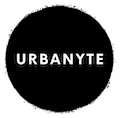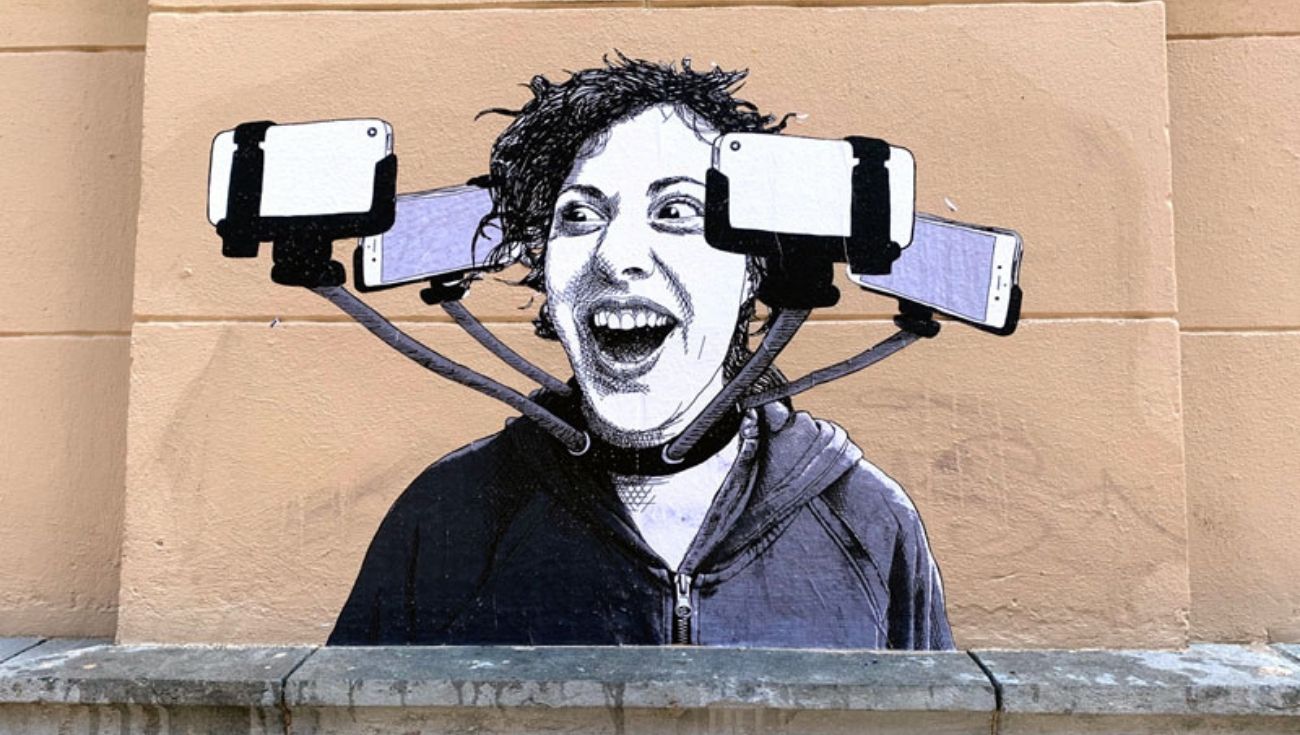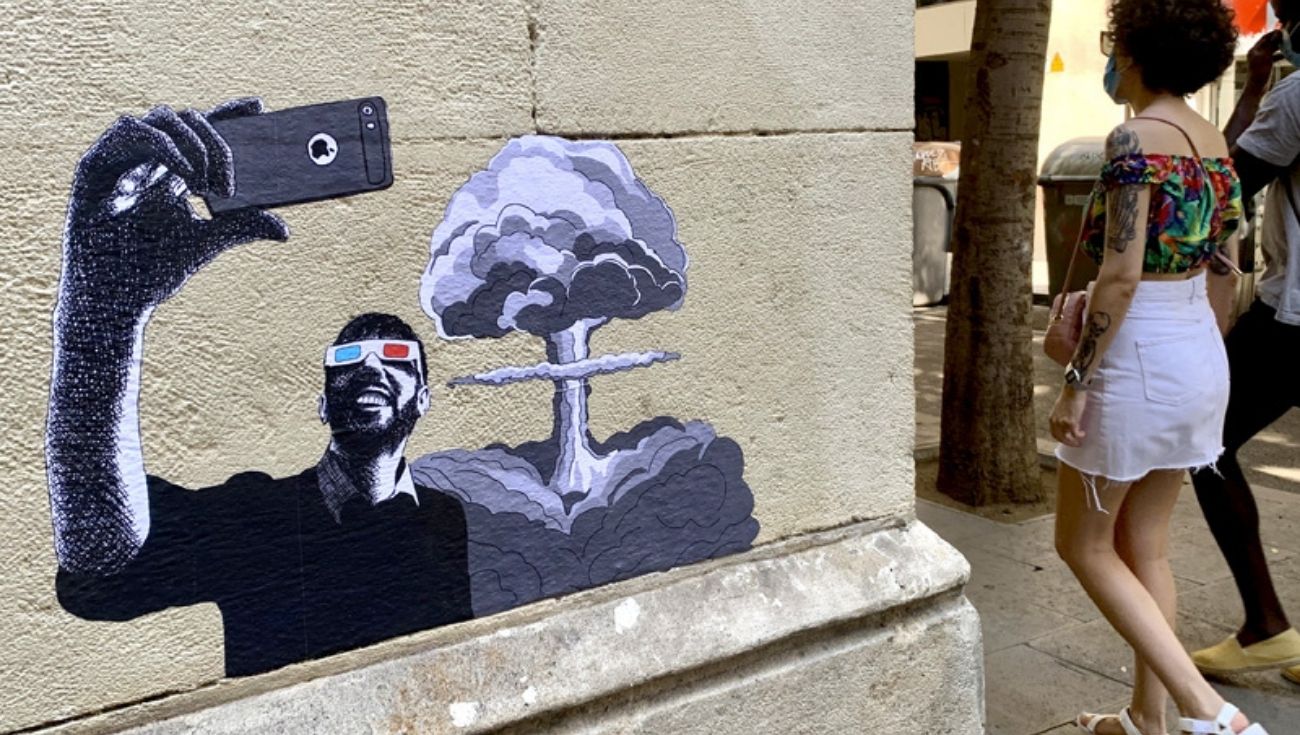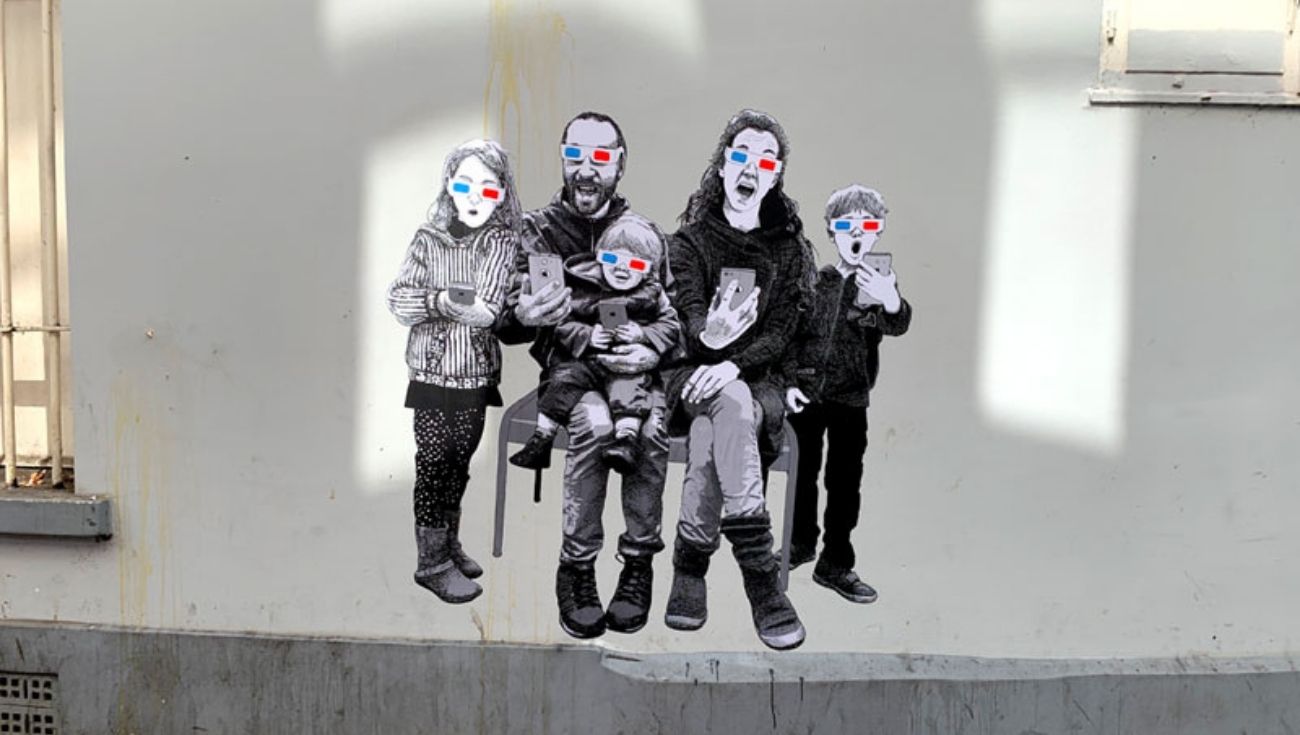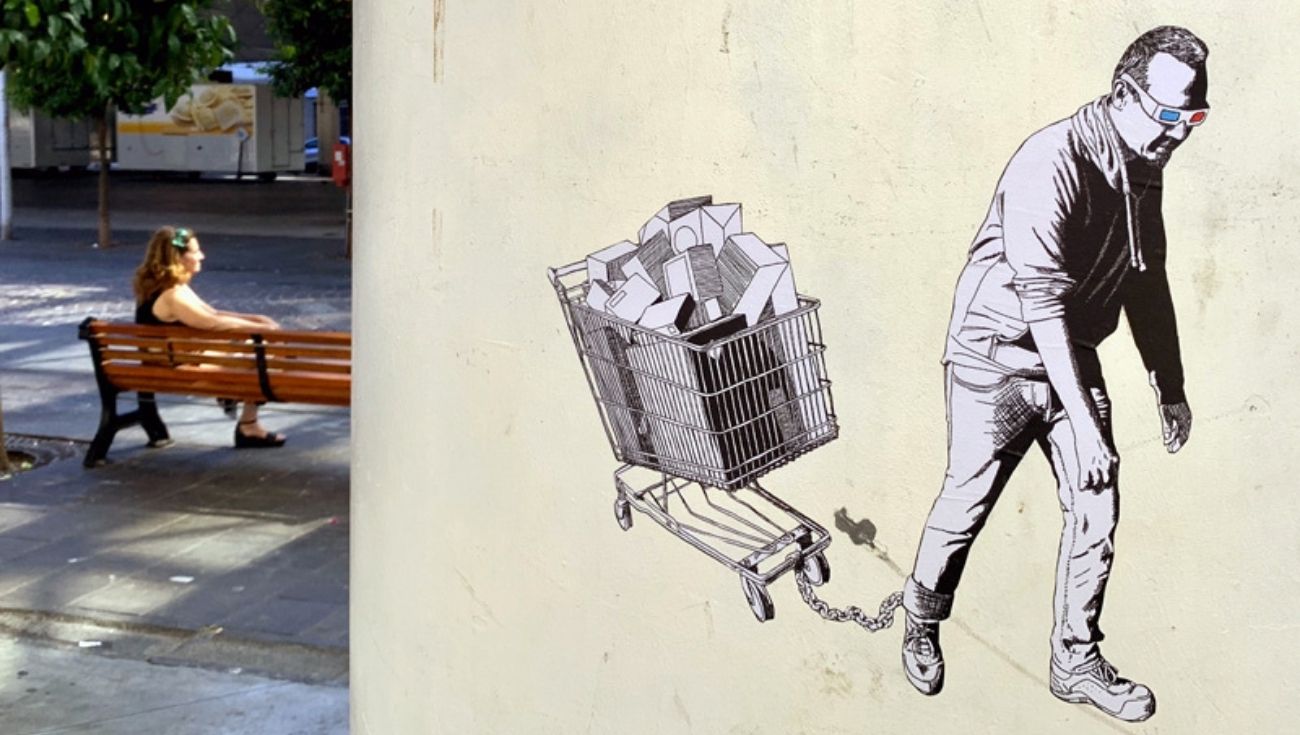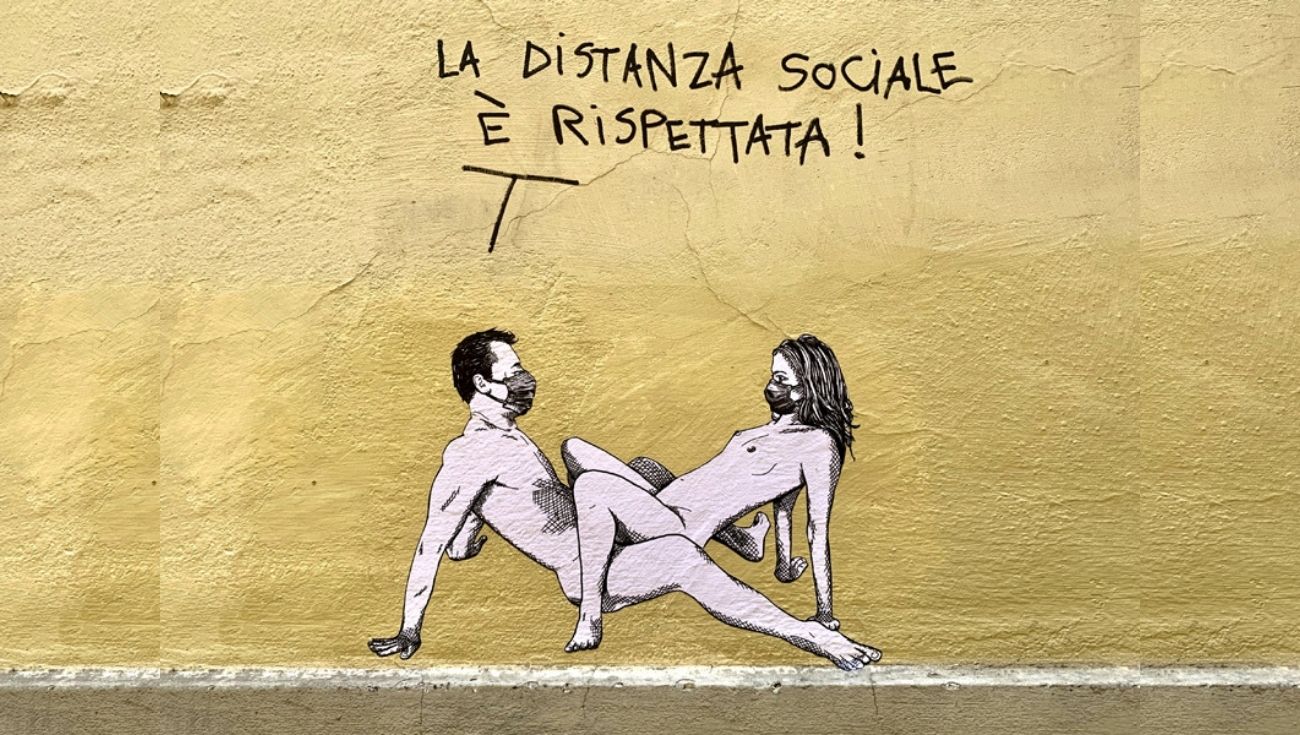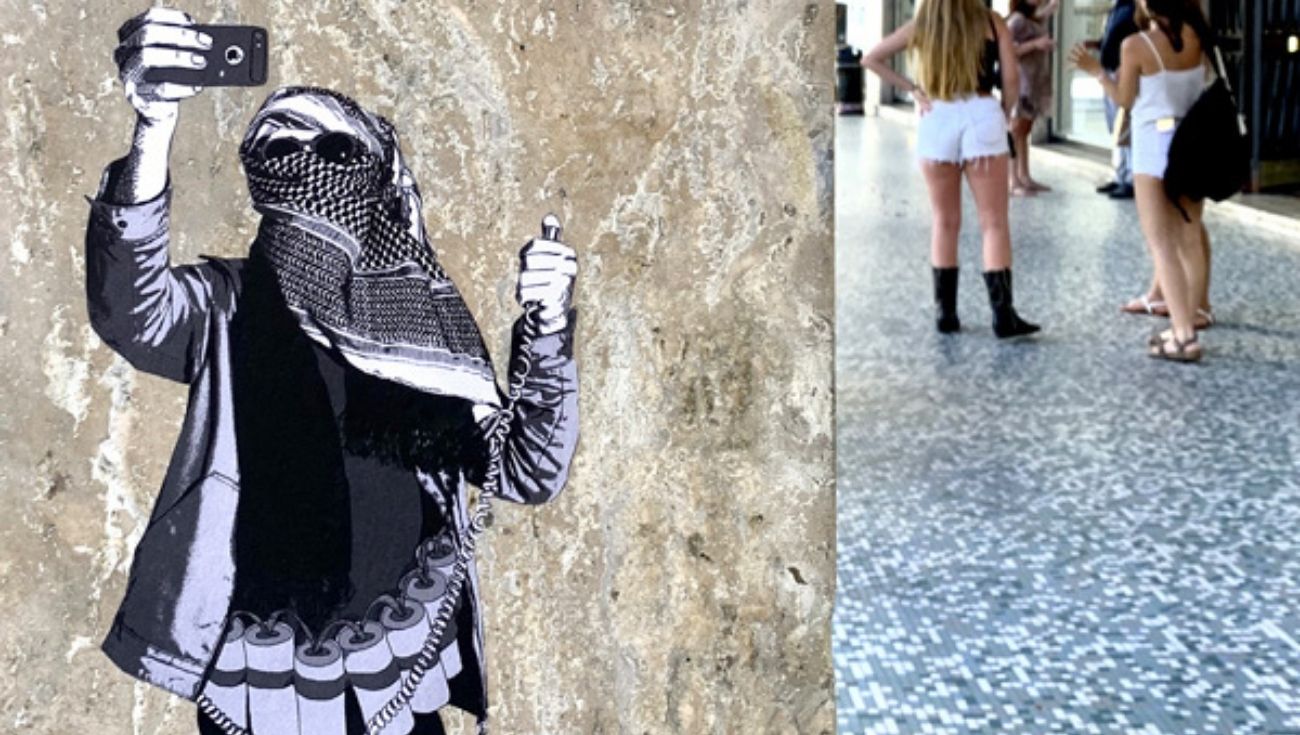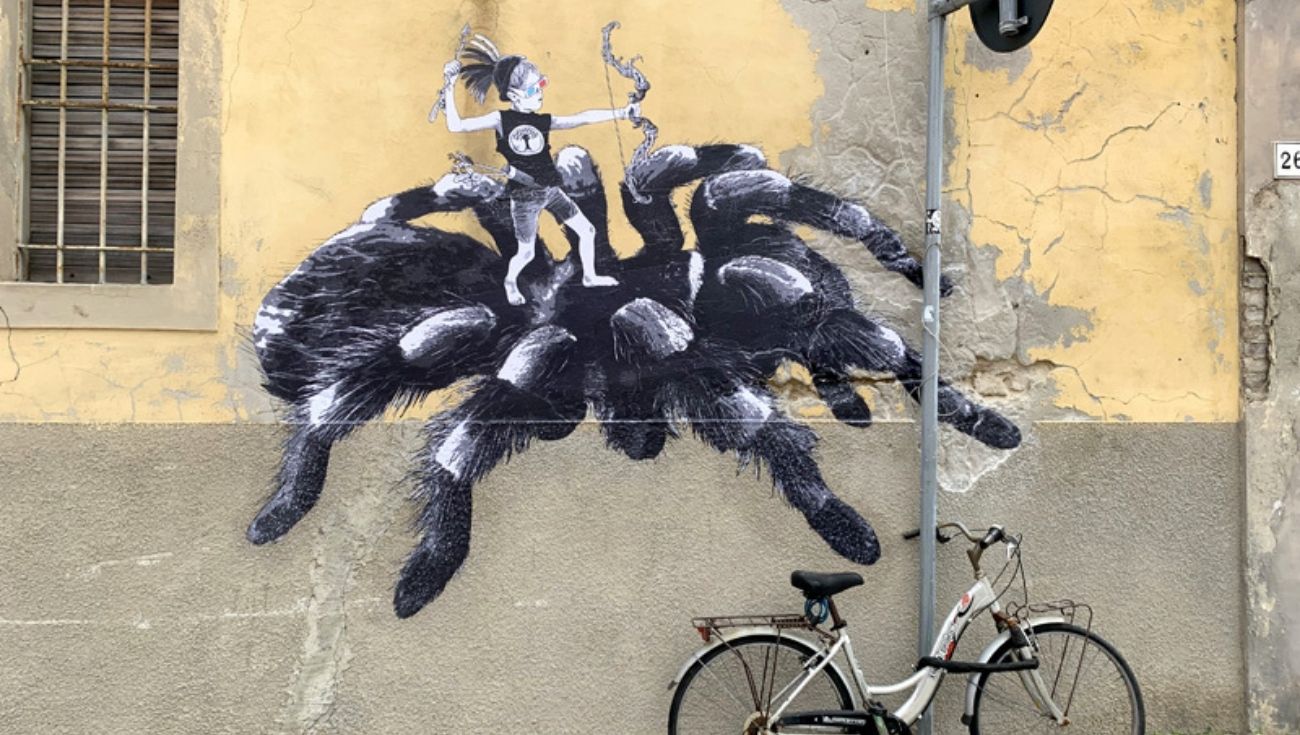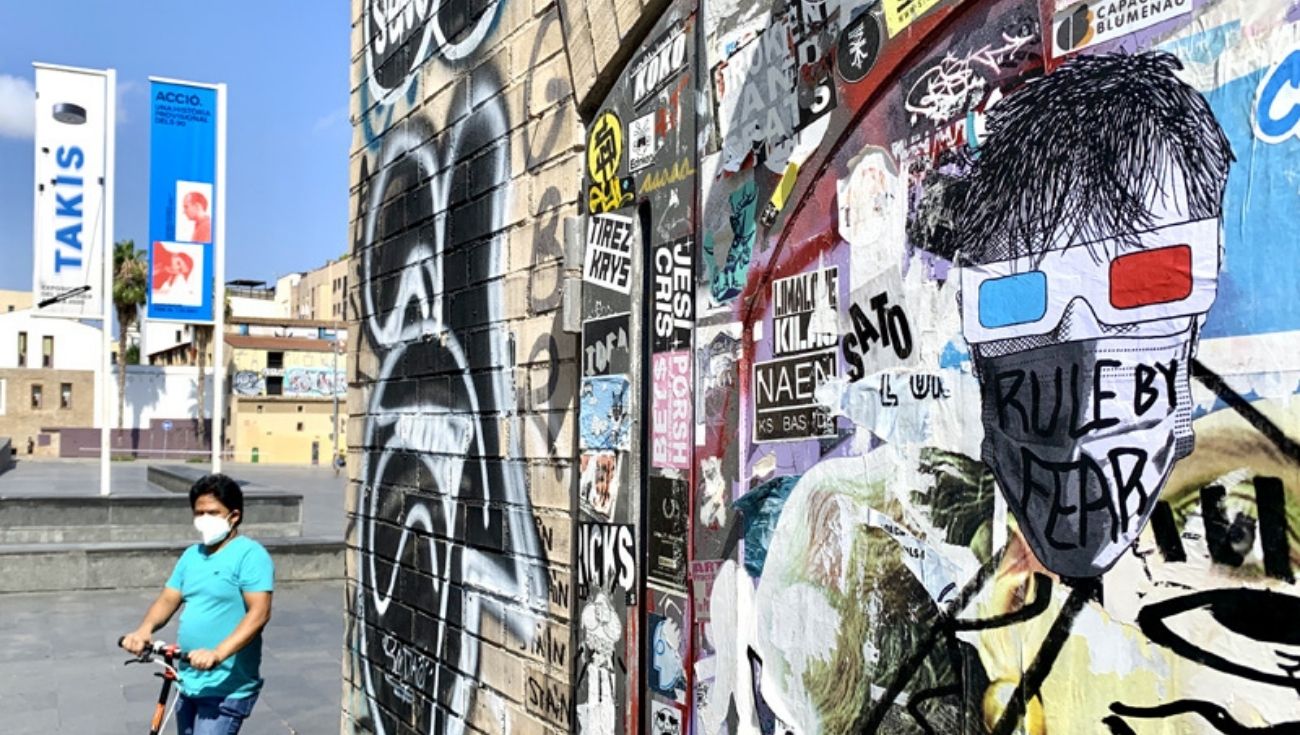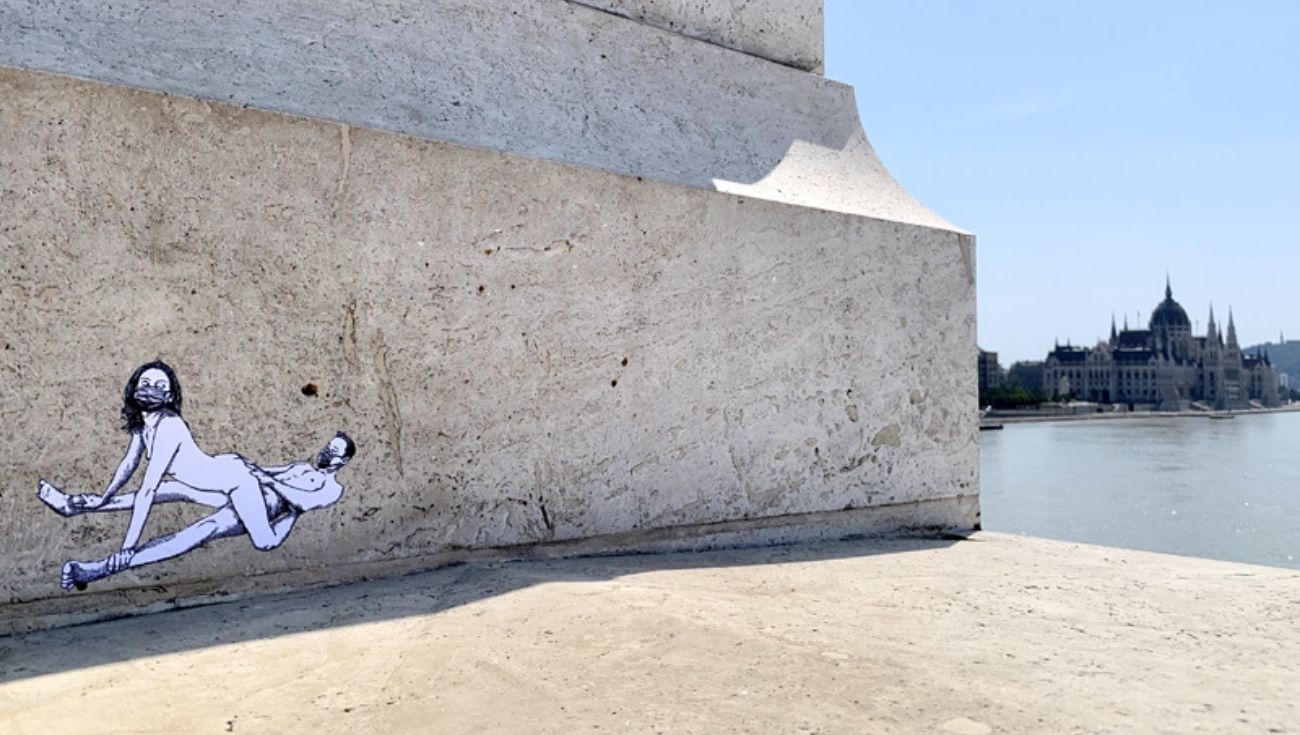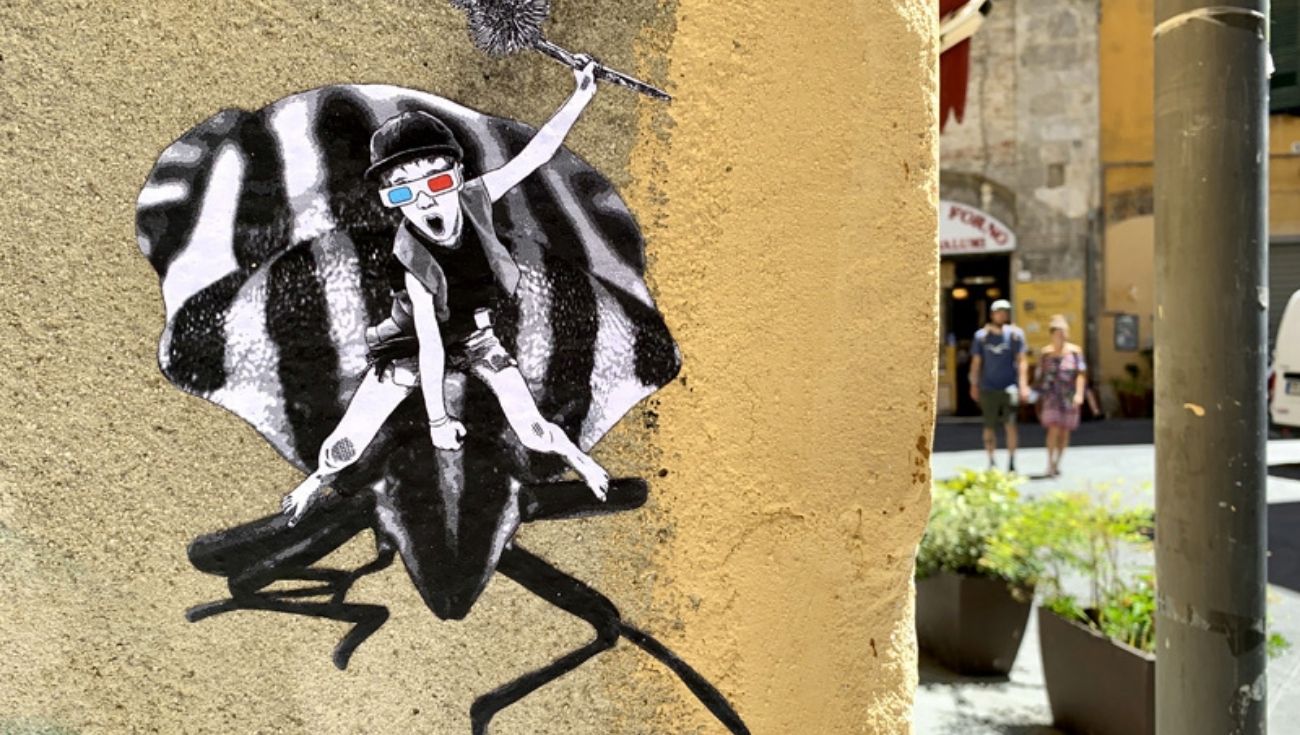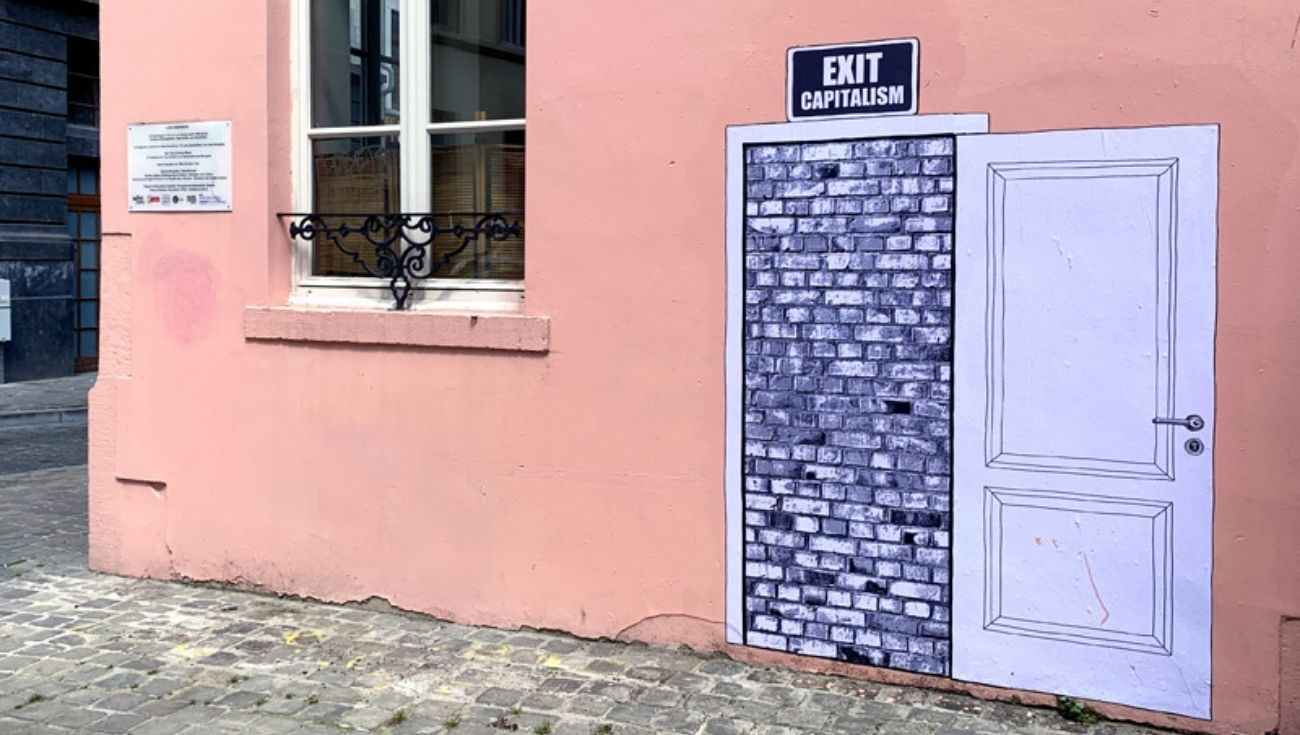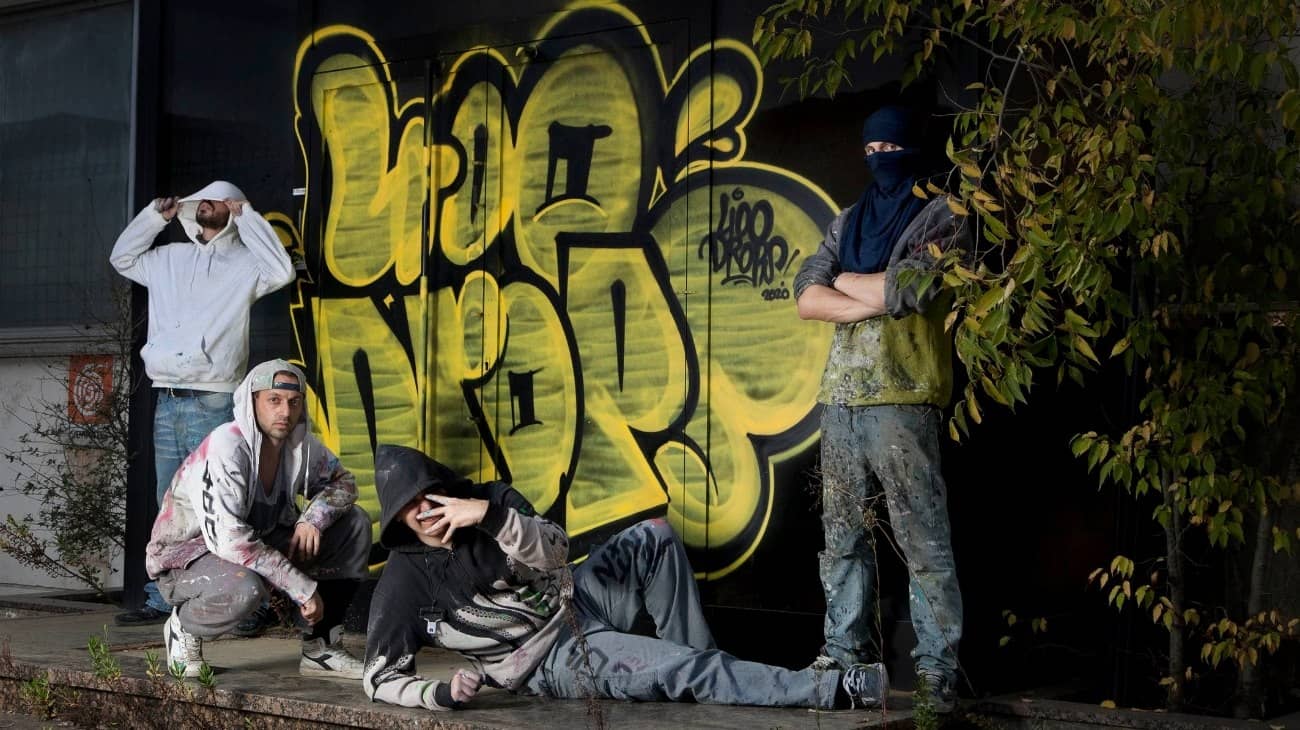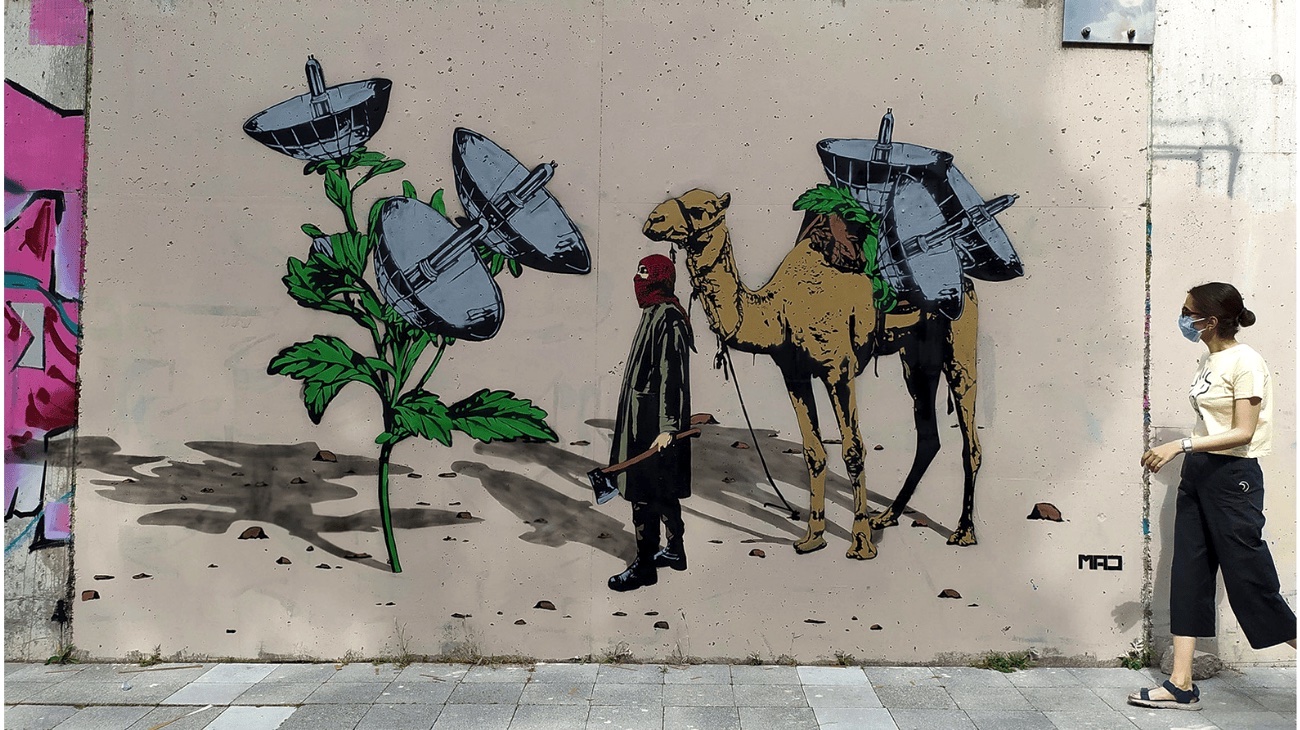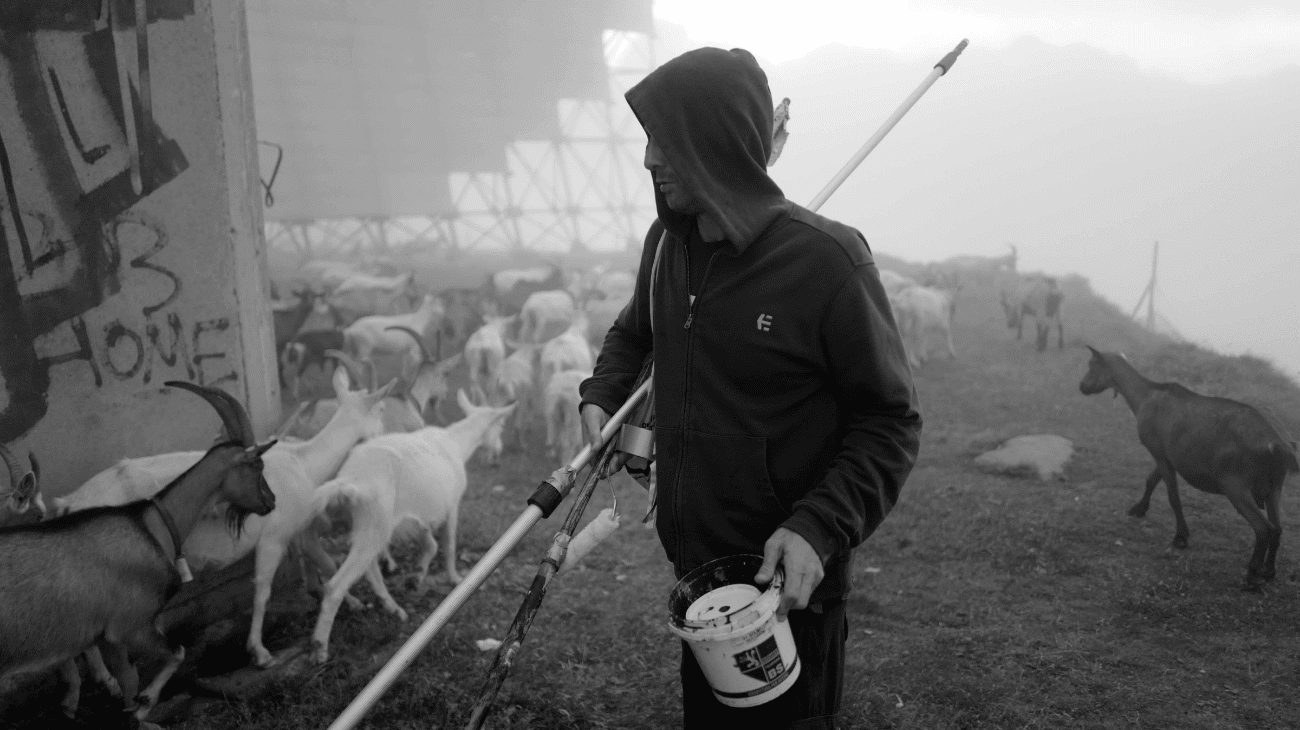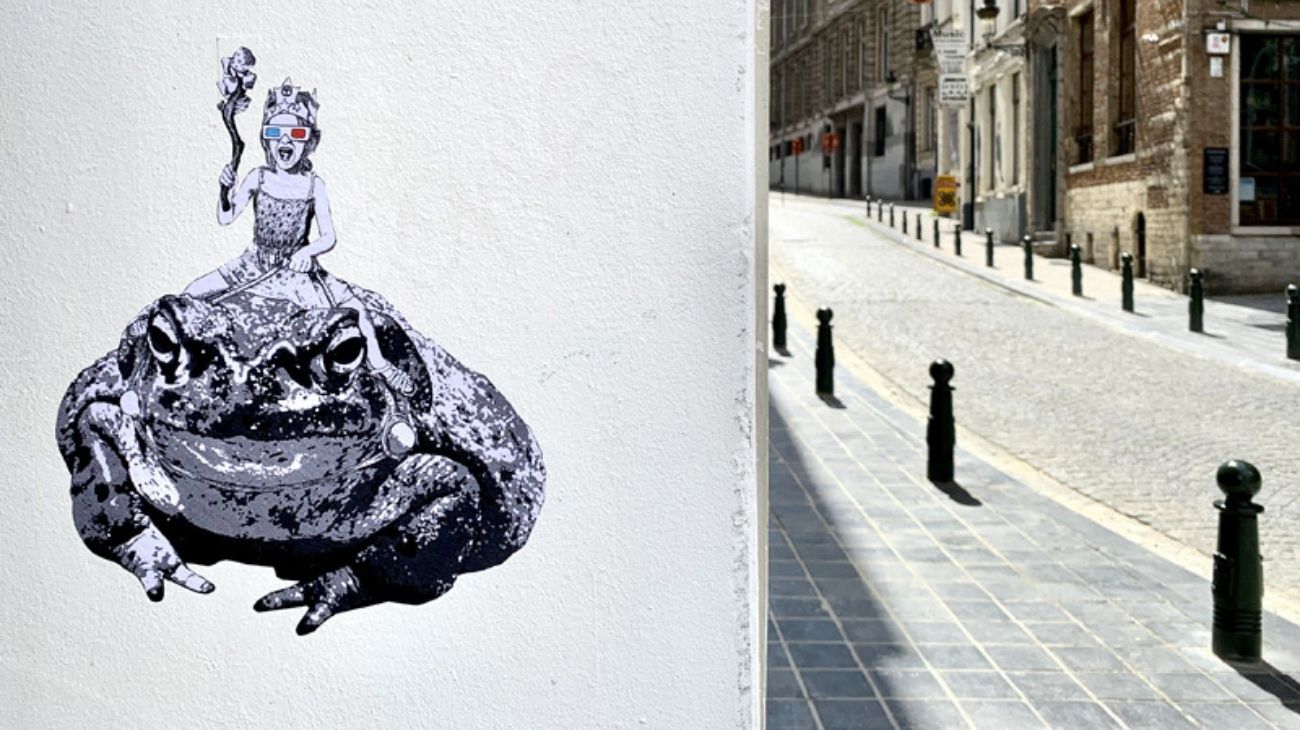
RADICAL PLAYGROUND
We want to be in relation with the whole world, and we want to take risks, completely losing control of the reactions that our interventions generate.
Radical Playground: is this how you would define the creation of art in urban space? A radical approach to reclaim public space?
Of course. A radical approach that consists of expressing itself freely in the privatized common space, which strangely enough is called “public space.” And to consider this public space as a playground, with the radicality of children confronting social reality with their games and imagination without limits.
You call yourselves “a collective of children.” Can you tell us more about who you are, how many you are, and what is behind the collective?
Of course, we use the term “children” in its broad sense. Being a child is important in a free artistic practice, as in the gaze we bring to the world. However, there are real children in the collective, which evolves with every session we do: many adults, teenagers, and children have participated in different moments – in the process of creating images as in the process of pasting them on the walls of the city.
When and why did you start with urban art? Was it the joy of making art or the need to spread a message in public?
Both. We make art because it gives us joy and because it brings joy to others. We make art to create dialogues and compare the world. We choose to make specifically urban art because it is there that we find more freedom and spontaneity – and because we want to escape from the private places of art, where we often meet only an acquired public. We want to be in relation with the whole world, and we want to take risks, completely losing control of the reactions that our interventions generate.
What are your sources of inspiration? Are there other (street) artists who influence you?
Everything inspires us: historical artists as well as current street art artists. We are mainly inspired by the avant-garde and by artists who provoke and confront the world (of art as the whole world). We particularly like urban interventions, and we recommend the incredible book Urban Interventions: Personal Projects in Public Spaces published by Gestalten.
Does urban art for you mean acting independently and only in a public space, or could you imagine one day exhibiting your works in an art space like a gallery or an institution?
Every situation is an opportunity to experiment and play. We are used to adapting and take advantage of every context. Obviously, when we are invited inside a consecrated white space, we tend to put it to the test and compare it, to play between the space outside and the space inside, or to look for a way to bring in another audience. In any case, we do not limit ourselves and welcome all proposals, trying every time to create a situation that is interactive, playful, and subversive. Unfortunately, this “radicality” of ours seems to be a barrier for galleries and institutions: no one has ever contacted us. Finally, creating without limits and without intermediaries in the public space will remain for us the basis of all our practice.
Your art focuses on the themes of current society and its dysfunctions in a humorous and often provocative way. What thoughts, reactions, or interactions do you want to create with the viewers of your art?
We try to confront people with the dysfunctions of our society. In this confrontation, reactions can be very strong. Between one who violently tears up our work and the one who adores it – taking pictures of it and spreading it on social networks – there is only one step. In any case, it is an important part of our work, and we receive all reactions with interest. We consider that someone’s reaction also speaks about themselves and their own opinions. We take this experience (even if it is a censorship experience…) as something formative, which is at the heart of our vision of art.
If you could change one thing in today’s society, what would it be?
We would change absolutely everything. We are convinced that we urgently need to rewrite everything and completely redefine the way we share our lives on Earth.
Your style is defined by series of drawings and collages, which you glue on the walls of Italian cities and abroad. What is your collaboration process?
We print everything. We do not make unique pieces, but each print is cut and colored (the 3D glasses that are a kind of signature…) by hand. The drawings are all made by Antoine Caramalli. We often come to Italy because part of the collective has Italian roots, so it is easier for us to be hosted. We go everywhere we are invited, because the economy is important in a project that is not lucrative – as is often the case in street art.
What are your future plans, projects, and dreams?
Now, let’s try to survive this Covid crisis, which is very bad for artists. We often do other jobs to earn money and pay the rent. And with a little luck, you will find us next spring with lots of new drawings on the street…
_______________________________________
Radical Playground Collective
Brussels, Belgium
_______________________________________
October 2020


